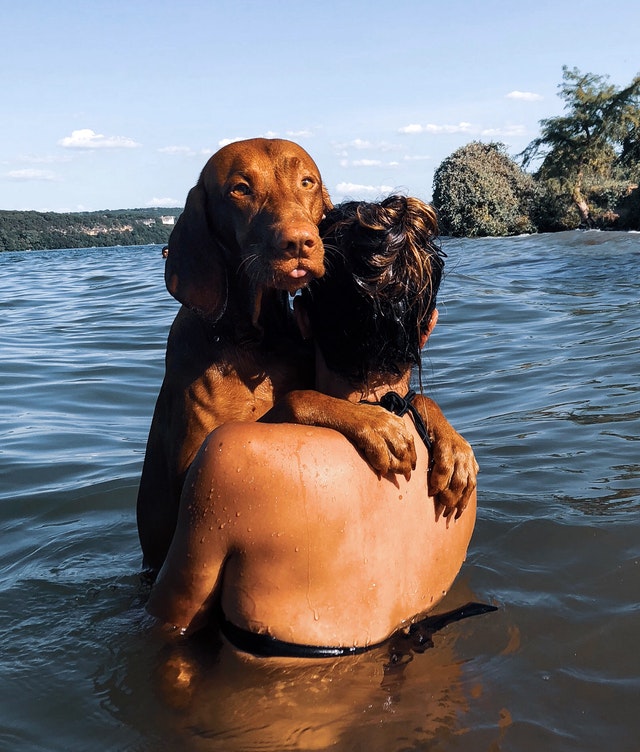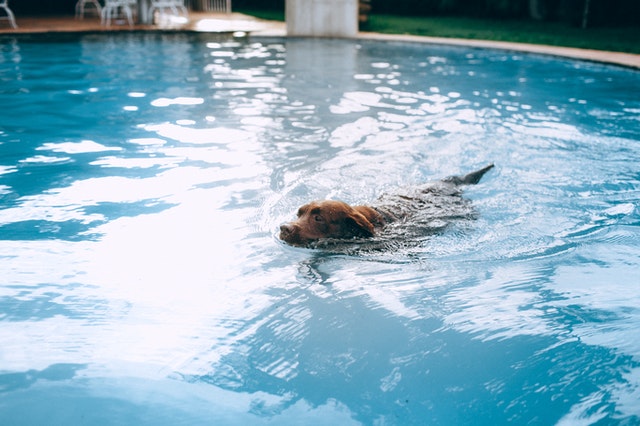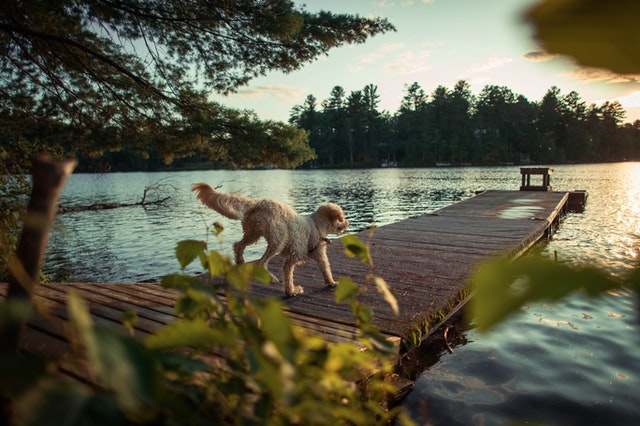Summer and vacation are almost here! You want to take your dog everywhere and enjoy activities like: cani-paddle, canoeing, swimming in the pool or even in the sea! But, will your dog be able to go everywhere with you if he can’t swim? Your dog is neither a fish nor an otter! So how do you teach them to swim? Here are all the steps!
Common misconception: swimming is innate to a dog!
While some dogs are very comfortable in water, no dog can swim from birth. Let’s remember that dogs are land mammals and although some of them may make us feel like super heroes, they don’t naturally know how to swim.
In fact, many dogs are even afraid to put their paws in the water. No wonder since it is unnatural for them.
However, some dogs manage to swim the first time without help. They are often dogs, which by reflex of survival, moved the legs. But that’s not all. They are often confident dogs that are comfortable with their bodies. They therefore have better control than others. Swimming is a colossal effort for a dog. Indeed, swimming uses muscles that he or she is not used to using in the same way. So it is very physically tiring. Swimming is therefore not an innate ability in dogs. And some are not at all good at staying on the surface and, on the contrary, tend to sink.

What you should not do
In learning the dog, many humans take shortcuts, willingly, but absolutely undesirable for the dog. Here is what you absolutely must not do to teach your dog to swim:
• Never push it in water: this is one of the worst things to do, yet one of the most common. Not only is it very dangerous for the dog, because it can drown, have a sudden hydrocution depending on the temperature or even panic the dog.
• Never force the dog into the water: Forcing your dog is unhealthy for your relationship and does not teach your dog to trust. In a panic, he can hurt himself or you hurt. Your dog has the right not to want to go in the water.
These two points create trauma in the dog, which can last for life. The dog can even develop a phobia of water.
Some dogs cannot swim
Swimming is unnatural and can be dangerous for some dogs. We can “classify” dogs into three categories: those who will be able to swim easily, those who will have to be taught and those who will be physically unable to do so!
This is particularly the case with brachycephalic dogs (with a squashed muzzle like the French Bulldog, the pug or the English Bulldog), but also dogs with short legs and very long bodies (like certain dachshunds or basset hounds). Small dogs are generally less comfortable than large dogs.
All these dogs have the common point of getting tired too quickly and not having the body powerful enough to learn to swim calmly and stay on the surface.
The risk of drowning is real and every year hundreds of dogs drown from incapacity or exhaustion (even if they knew how to swim). So think about putting a life jacket on your dog!
Putting a life jacket on your dog is a responsible act, which helps to minimize the risk of drowning. They come in all sizes and for all styles.
Some dogs don’t like water
Beyond the fact that some dogs cannot swim, it is also important to remember that not all dogs like water. You may be bothered, but it is so. You can’t make a dog like water. Some humans don’t like it either.
It has nothing to do with the breed of the dog. Indeed, you can have a golden retreiver who doesn’t like water and a Pug who would like to jump in all rivers! So, as usual, be indulgent and give your dog the choice to follow you or not. Your dog can live his entire life without ever going in the water, that’s okay.
How to teach my dog to swim in 5 steps?
However, whatever the situation, you can already positively approach the water. This is the first step. Choose a quiet and secure location near the water’s edge. Your dog should trust you. Have fun with it by the water without having to step foot in it. Show him you’re there, that nothing will happen. If you are ready we will be able to move on to the 5 concrete steps to teach your dog to swim:

- Step 1: Equip yourself with tasty treats and your dog’s favorite toy. Start playing with him next to the water. Take your time, because it should be experienced in a very positive way by your dog.
- Step 2: Find a place where it will have a leg so it will feel comfortable. Don’t tie it up. Your dog should learn that he can always get out of a situation that he is not comfortable with. Assume that a dog is always worried about what he doesn’t know.
- Step 3: Go into the water and call your dog. Motivate him to follow you. Once he steps into the water or manages to catch up with you, reward him with a treat, his toy, and even a verbal validation like a “yes”.
- Step 4: Don’t force him to stay next to you if he doesn’t want to. This step should be repeated several times, until the dog can stay with its paws in the water longer.
- Step 5: Once this step has been completed, you can encourage your dog to accompany you where he has no legs and help him swim by placing your hand under his belly. You can also throw a toy at him (not too far at the start) to make him jump into the water.

All these steps must be taken at the dog’s pace. It can take several hundred tries for the dog to do this. We must always remain patient and encourage him. You can help yourself with another dog that can swim. Indeed, your dog could swim by mimicry.
You now know all the steps to teach your dog to swim. However, it is important to always be present when the dog is swimming and not to let it run out or risk drowning. Puppies and senior dogs tire more quickly. In any case, consider putting on a life jacket!




